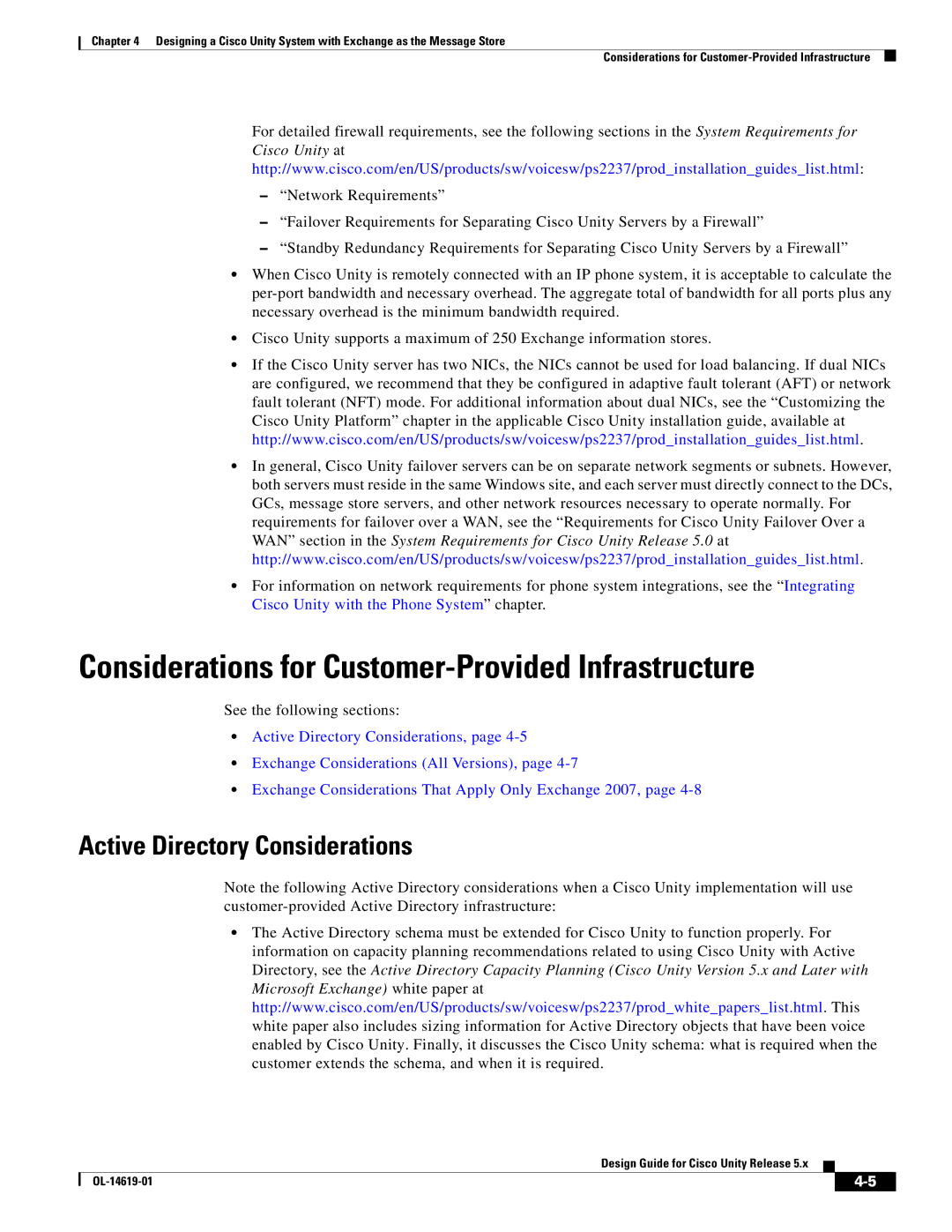
Chapter 4 Designing a Cisco Unity System with Exchange as the Message Store
Considerations for
For detailed firewall requirements, see the following sections in the System Requirements for
Cisco Unity at
http://www.cisco.com/en/US/products/sw/voicesw/ps2237/prod_installation_guides_list.html:
–“Network Requirements”
–“Failover Requirements for Separating Cisco Unity Servers by a Firewall”
–“Standby Redundancy Requirements for Separating Cisco Unity Servers by a Firewall”
•When Cisco Unity is remotely connected with an IP phone system, it is acceptable to calculate the
•Cisco Unity supports a maximum of 250 Exchange information stores.
•If the Cisco Unity server has two NICs, the NICs cannot be used for load balancing. If dual NICs are configured, we recommend that they be configured in adaptive fault tolerant (AFT) or network fault tolerant (NFT) mode. For additional information about dual NICs, see the “Customizing the Cisco Unity Platform” chapter in the applicable Cisco Unity installation guide, available at http://www.cisco.com/en/US/products/sw/voicesw/ps2237/prod_installation_guides_list.html.
•In general, Cisco Unity failover servers can be on separate network segments or subnets. However, both servers must reside in the same Windows site, and each server must directly connect to the DCs, GCs, message store servers, and other network resources necessary to operate normally. For requirements for failover over a WAN, see the “Requirements for Cisco Unity Failover Over a WAN” section in the System Requirements for Cisco Unity Release 5.0 at http://www.cisco.com/en/US/products/sw/voicesw/ps2237/prod_installation_guides_list.html.
•For information on network requirements for phone system integrations, see the “Integrating Cisco Unity with the Phone System” chapter.
Considerations for Customer-Provided Infrastructure
See the following sections:
•Active Directory Considerations, page
•Exchange Considerations (All Versions), page
•Exchange Considerations That Apply Only Exchange 2007, page
Active Directory Considerations
Note the following Active Directory considerations when a Cisco Unity implementation will use
•The Active Directory schema must be extended for Cisco Unity to function properly. For information on capacity planning recommendations related to using Cisco Unity with Active Directory, see the Active Directory Capacity Planning (Cisco Unity Version 5.x and Later with Microsoft Exchange) white paper at http://www.cisco.com/en/US/products/sw/voicesw/ps2237/prod_white_papers_list.html. This white paper also includes sizing information for Active Directory objects that have been voice enabled by Cisco Unity. Finally, it discusses the Cisco Unity schema: what is required when the customer extends the schema, and when it is required.
Design Guide for Cisco Unity Release 5.x
|
| ||
|
|
